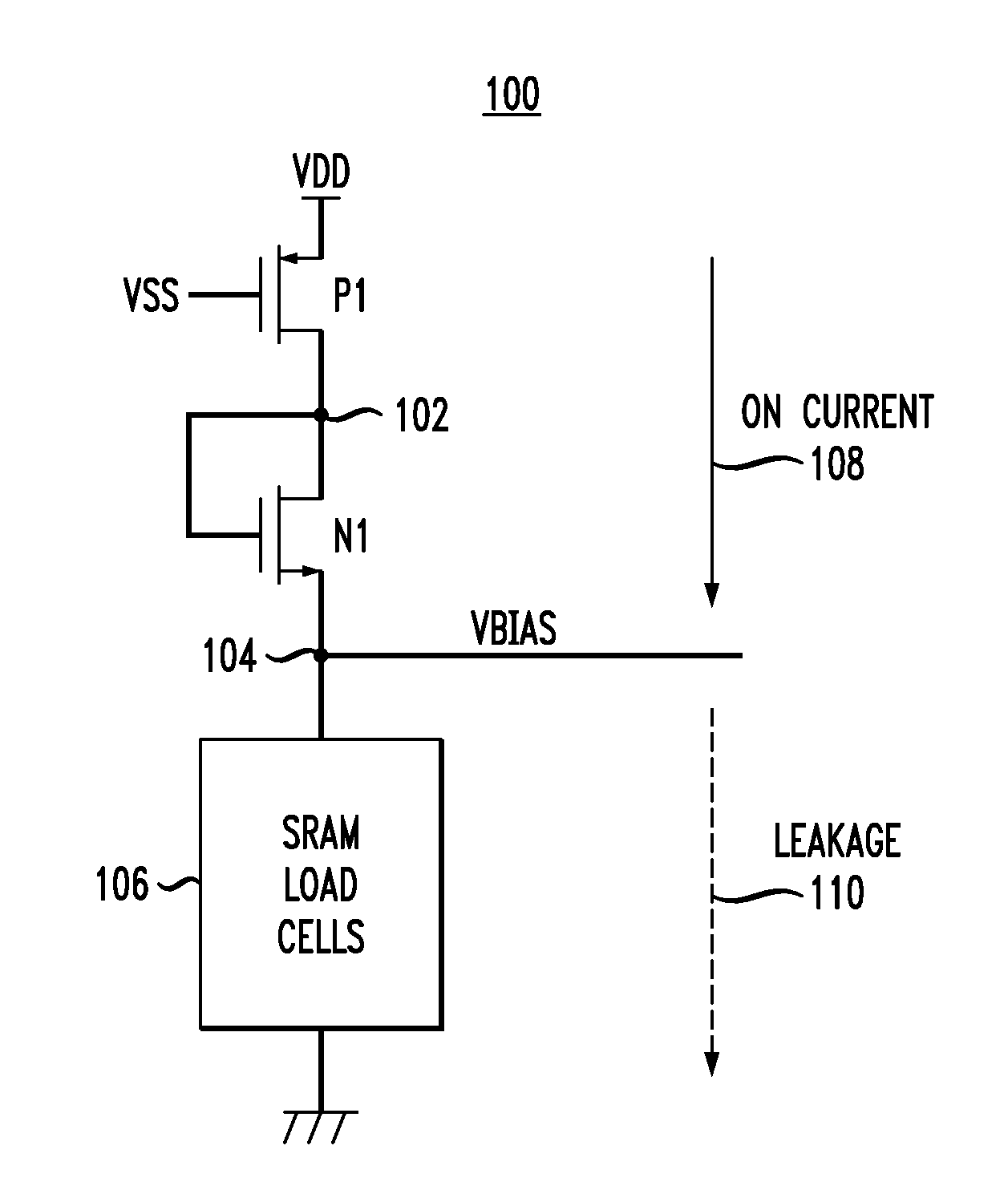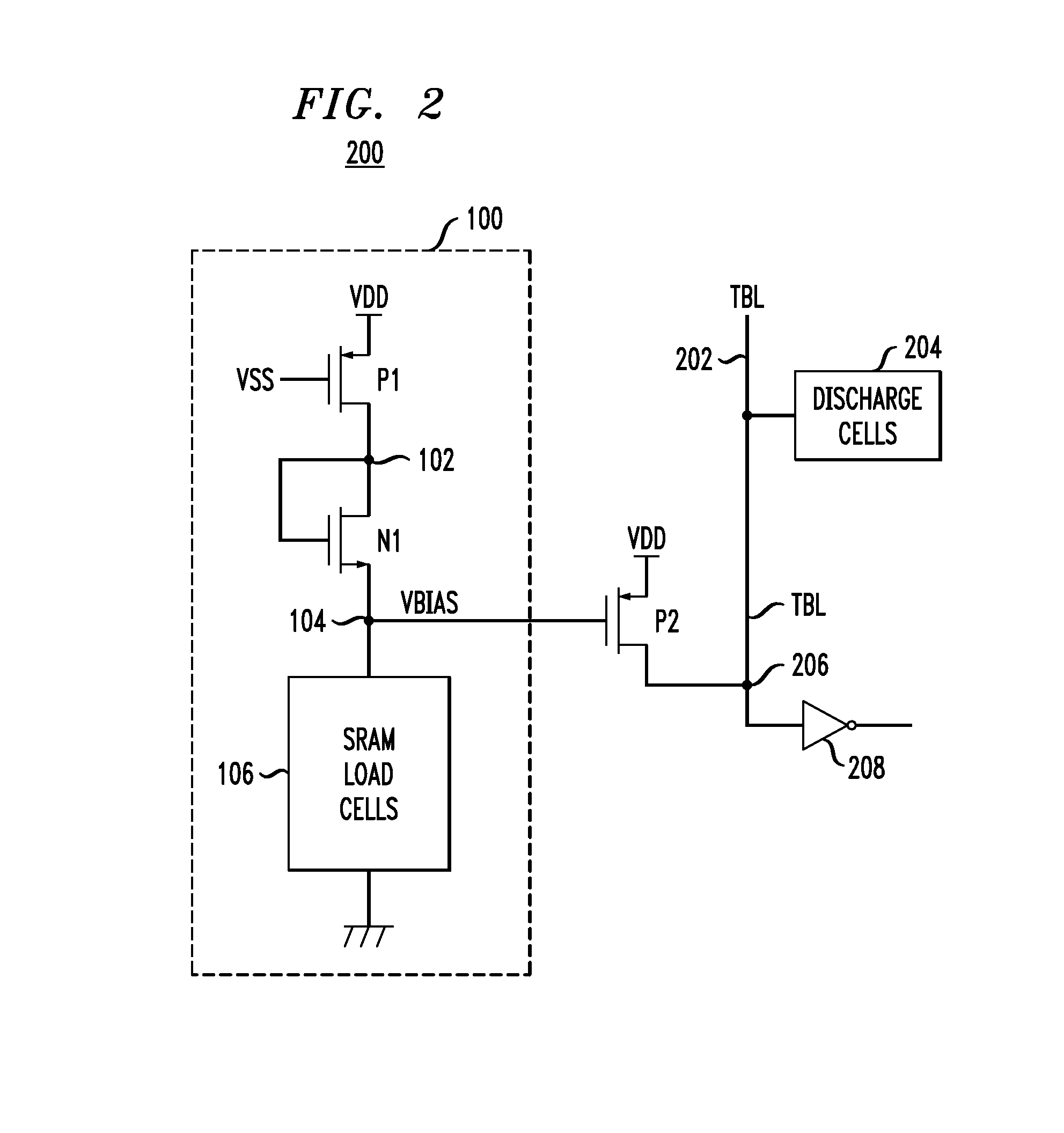Area-efficient process-and-temperature-adaptive self-time scheme for performance and power improvement
a self-time scheme and temperature adaptation technology, applied in the field of integrated circuits, can solve the problems of conventional self-timing circuits triggering the sense amplifier too soon, self-timing circuits triggering the sense amplifier too late, etc., and achieve the effect of improving the timing performance of sense amplifiers
- Summary
- Abstract
- Description
- Claims
- Application Information
AI Technical Summary
Benefits of technology
Problems solved by technology
Method used
Image
Examples
Embodiment Construction
[0023]FIG. 1 depicts bias circuit 100, which comprises P-type transistor P1 having a source terminal connected to a first supply-voltage source (e.g., VDD), a gate terminal connected to a control-voltage source (e.g., supply-voltage source VSS), and a drain terminal connected to node 102. Bias circuit 100 further comprises N-type transistor N1 having a drain terminal connected to node 102, a gate terminal also connected to node 102, and a source terminal connected to node 104. One or more load cells 106 are connected either between node 104 and circuit ground or, alternatively, between node 104 and a second supply-voltage source (e.g., VSS).
[0024]Bias circuit 100 operates to produce a process-and-temperature-dependent bias signal VBIAS at node 104 in the following manner. The application of voltage VSS to the gate terminal of transistor P1 tends to cause the transistor to be conductive (or switched “on”). Because the gate and drain terminals of N-type transistor N1 are connected, tr...
PUM
 Login to View More
Login to View More Abstract
Description
Claims
Application Information
 Login to View More
Login to View More - R&D
- Intellectual Property
- Life Sciences
- Materials
- Tech Scout
- Unparalleled Data Quality
- Higher Quality Content
- 60% Fewer Hallucinations
Browse by: Latest US Patents, China's latest patents, Technical Efficacy Thesaurus, Application Domain, Technology Topic, Popular Technical Reports.
© 2025 PatSnap. All rights reserved.Legal|Privacy policy|Modern Slavery Act Transparency Statement|Sitemap|About US| Contact US: help@patsnap.com



